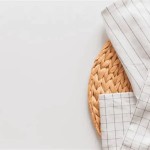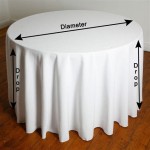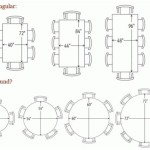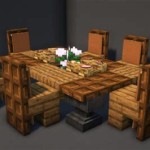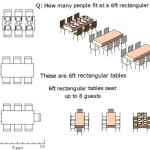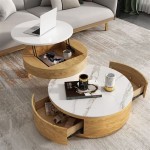Ideal Depth And Table For Round Diamond Size Chart
Understanding diamond proportions, particularly depth and table percentages, is crucial for assessing the quality and brilliance of a round brilliant cut diamond. These measurements, when aligned within optimal ranges, contribute significantly to the diamond's light performance, fire, and scintillation. Deviations from these ideal proportions can result in a dull or lackluster appearance, even in diamonds with high clarity and color grades.
The interplay between depth and table directly affects how light interacts with the diamond. Light entering the diamond should be internally reflected and refracted, exiting through the top (table) to create brilliance. If the depth is too shallow or too deep, light can escape through the bottom or sides of the diamond, diminishing its brilliance. Similarly, the table size influences how much light enters the diamond and how efficiently it is dispersed.
A "round diamond size chart" relating specifically to ideal depth and table percentages serves as a useful guideline for prospective buyers. This chart typically outlines ranges that jewelers and gemologists consider optimal for maximizing a round brilliant diamond's visual appeal. It's important to note that these are guidelines, and slight variations can still result in a beautiful diamond. However, significant deviations should raise concerns about light performance.
Understanding Diamond Depth Percentage
The depth percentage of a diamond is calculated by dividing the diamond's depth (measured from the table's top to the culet's bottom) by its diameter. This percentage indicates how "deep" the diamond is relative to its width. An ideal depth percentage generally falls within the range of 59% to 62.3% for round brilliant diamonds, according to the Gemological Institute of America (GIA) grading reports.
Diamonds with depth percentages significantly lower than 59% are considered shallow. Shallow diamonds often exhibit a "fisheye" effect, where a reflection of the girdle (the diamond's widest point) is visible through the table. Light entering a shallow diamond tends to escape quickly through the bottom, resulting in reduced brilliance and fire. The light doesn't have enough distance to properly reflect and refract before exiting, leading to a less-than-desirable visual appearance.
Conversely, diamonds with depth percentages significantly higher than 62.3% are considered deep. Deep diamonds tend to appear smaller than their carat weight would suggest, as much of the diamond's mass is concentrated in its depth and hidden from view. Furthermore, light entering a deep diamond can strike the pavilion facets at an incorrect angle, causing it to leak out the bottom rather than reflecting back to the viewer. This phenomenon, known as "light leakage," results in a diamond that appears dark and lifeless.
While the GIA range provides a solid benchmark, other factors, such as crown angle and pavilion depth, can influence how a diamond performs, even within the accepted depth range. A skillful cutter can sometimes compensate for minor deviations in depth by adjusting other proportions. This is why it's important to consider the overall cut grade and not solely rely on the depth percentage.
Understanding Diamond Table Percentage
The table percentage of a diamond is calculated by dividing the width of the table facet by the diamond's diameter. The table facet is the large, flat facet on the top of the diamond. The table percentage indicates how large or small the table facet is relative to the diamond's overall width. The ideal table percentage range for round brilliant diamonds typically falls between 54% and 57%. While some sources indicate a slightly broader range of 52% to 62%, higher table percentages within this range can often result in less optimal light performance.
Diamonds with table percentages lower than 54% are considered to have small tables. A small table can restrict the amount of light entering the diamond, hindering its brilliance. While a smaller table might theoretically enhance fire (the dispersion of light into spectral colors), the overall effect is often a decrease in brightness. The diamond may appear less lively and lack the sparkle that is characteristic of a well-cut round brilliant.
Diamonds with table percentages higher than 57% (or certainly above 62%) are considered to have large tables. A large table can allow too much light to enter the diamond without proper reflection and refraction. This can result in a lack of contrast and scintillation, making the diamond appear glassy or flat. The light enters and exits too easily, without creating the desired pattern of bright and dark areas that contribute to a diamond's visual appeal. The diamond can look less lively because of the missing contrast.
As with depth percentage, the table percentage should be considered in conjunction with other cut parameters. The crown angle, star facet length, and lower girdle facet length all interact to influence a diamond's light performance. A skilled grader will assess the overall balance of these proportions to determine the diamond's cut grade and predict its visual appearance.
The Interplay of Depth and Table
The depth and table percentages are not independent variables; they work together to determine how light behaves within a diamond. A diamond with an ideal depth percentage but a very large table percentage may still exhibit poor light performance, and vice versa. The optimal combination is a balance that allows for maximum light intake, internal reflection, and return to the viewer's eye.
For example, a diamond with a slightly deeper depth percentage (e.g., 62%) might perform well with a slightly smaller table percentage (e.g., 54%), as the smaller table will control the light entering the diamond and allow for more internal reflection. Conversely, a diamond with a slightly shallower depth percentage (e.g., 59%) might benefit from a slightly larger table percentage (e.g., 57%) to maximize light intake and compensate for the shorter light path within the diamond.
Cut grading systems, such as the GIA's cut grade, take into account the interplay of these proportions, along with other factors like polish and symmetry. A diamond with excellent polish and symmetry can maximize its brilliance and fire, even with slight deviations in depth and table percentages. However, significant deviations from the ideal ranges will typically result in a lower cut grade and a less desirable visual appearance.
Beyond depth and table, crown angle and pavilion depth are critical. The crown angle is the angle between the bezel facets and the table plane. The pavilion depth is the distance from the girdle to the culet. Ideal crown angles typically range from 34 to 35 degrees, while ideal pavilion depths are around 43%. These measurements affect how light is reflected within the diamond and should be considered alongside depth and table percentages.
Ultimately, the "ideal" depth and table percentages are more of a guideline than a rigid rule. The best way to assess a diamond's light performance is to view it in person or examine it through high-quality images or videos that show its brilliance, fire, and scintillation. A skilled appraiser can also use specialized equipment and software to analyze a diamond's light performance and provide a detailed assessment of its cut quality. While adhering to the recommended ranges for depth and table percentages increases the likelihood of selecting a beautiful diamond, prioritizing overall light performance is the most important factor.

What Are The Ideal Proportions For Round Cut Diamonds Revealed

The Significance Of Diamond Depth And Table Percentages

Diamond Anatomy Explained

Diamond Anatomy Explained

Expert Guide How To Calculate Diamond Depth Percentage

The Ideal Proportions For A Princess Cut Diamond Jewelry Secrets

Diamond Table And Depth Percentage Steven Stone

What Are The Perfect Diamond Proportions

Diamond Depth And Table Here S Everything You Need To Know

Ideal Diamond Depth Table Sgdx Singapore Exchange
Related Posts


